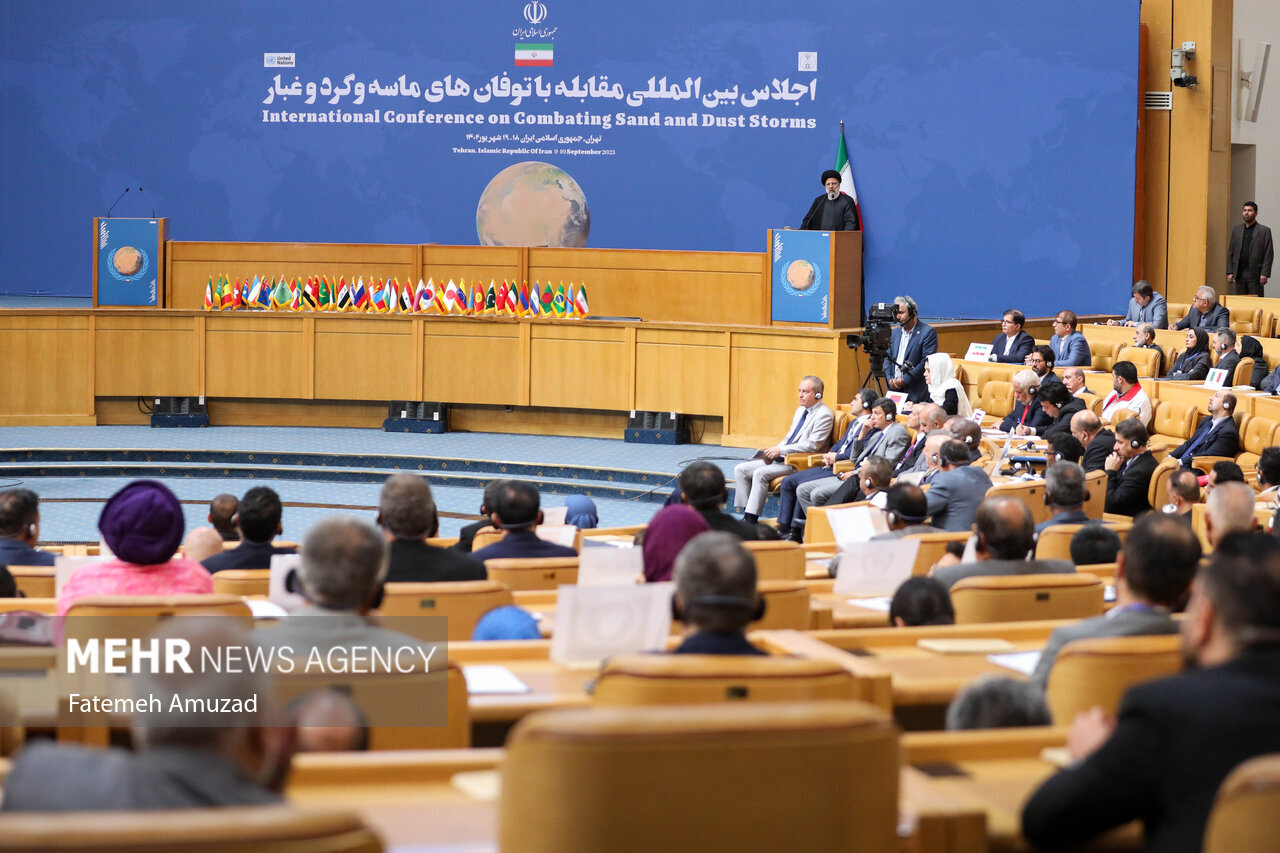INSUBCONTINENT EXCLUSIVE:
TEHRAN - Tehran is playing host to an international conference on combating sand and dust storms with representatives of more than 50
countries in attendance.The two-day event is held based on resolution number A77571 of the United Nations General Assembly in 2022, with the
to the world's biological and environmental resources.According to surveys, 150 countries are affected by SDSs, and most of these
countries are located in Africa and Asia.Addressing the conference, President Ebrahim Raisi said environmental degradation is a global
development, which is an oppression of humanity and the environment.He referred to consensus and convergence as the solution to finding a
cure for this common painEnvironmental protection should not be influenced by political issues, because in this case, it will lead nowhere,
the Islamic Republic of Iran, Raisi said.Ali Salajeqeh, the chief of the Department of Environment, also delivered a speech, saying that
three-quarters of the population on the planet, that is, five billion people will suffer from water shortage for one month a year.The last
article published in 2023 shows that in the last 30 years, many of the great lakes of the world dried up, indicating that the sources of
unilateral and illegitimate coercive sanctions is not only a big obstacle to the economic and social development of countries, but also
deprives the right to enjoy a healthy environment by overshadowing the principles contained in the United Nations Charter and international
laws, he explained.He made the remarks at the 14th International Convention on Environment and Development, which was held in Havana,
Cuba.The country is deprived of access to global environmental funds including the Global Environment Facility (GEF) and many new equipment
principle of environmental protection in its Constitution but also emphasized the environment as the main focus of balanced development in
carbon; recycling carbon dioxide and reusing it in various industries, especially petrochemical and refinery industries; implementing
projects to collect and process flare gases in oilfields; creating and setting up a bank of biological and cellular samples as a method of
out-of-habitat protection of the genetic resources of the country's wildlife; and paying special attention to the issue of microplastics
storms, positive measures have been taken inside the country.In July 2022, Tehran played host to a conference of ministers and officials
from 11 countries, aiming to boost cooperation for resolving extant environmental problems, especially sand and dust storms.Environment
ministers of Iraq, Armenia, the United Arab Emirates, Oman, Syria, and Qatar, as well as deputy ministers of Azerbaijan and Turkmenistan
and an inevitable priority.Raisi had earlier obliged the Department of Environment to diligently pursue the solution of sand and dust storms
environment, which is a global concern, especially for countries of the region, is an inevitable priority today
If the environment is not safe and peaceful for people, the development will not be in its proper place and it will even become a threat to
and Persian Gulf countries are affecting Iran.Regional maps show that Saudi Arabia produces the highest level of particulate matter,
followed by Iraq, Syria, Kuwait, and the UAE, respectively.A ten-year plan has been prepared to curb internal sources of sand and dust
storms.The internal dust sources are estimated at 34.6 million hectares, generating an average amount of 4.22 million tons of dust per year,
combat SDSs, which had good results, but it seems that the annual credit is declining as conditions improve.Letizia Rossano, the director of
the Asian and Pacific Centre for the Development of Disaster Information Management (APDIM), said in June 2022 that Iran is really at the
forefront of understanding the problem of sand and dust storms as well as dealing with it.More than 80 percent of the entire populations of
Turkmenistan, Pakistan, Uzbekistan, Tajikistan, and the Islamic Republic of Iran are exposed to medium and high levels of poor air quality

